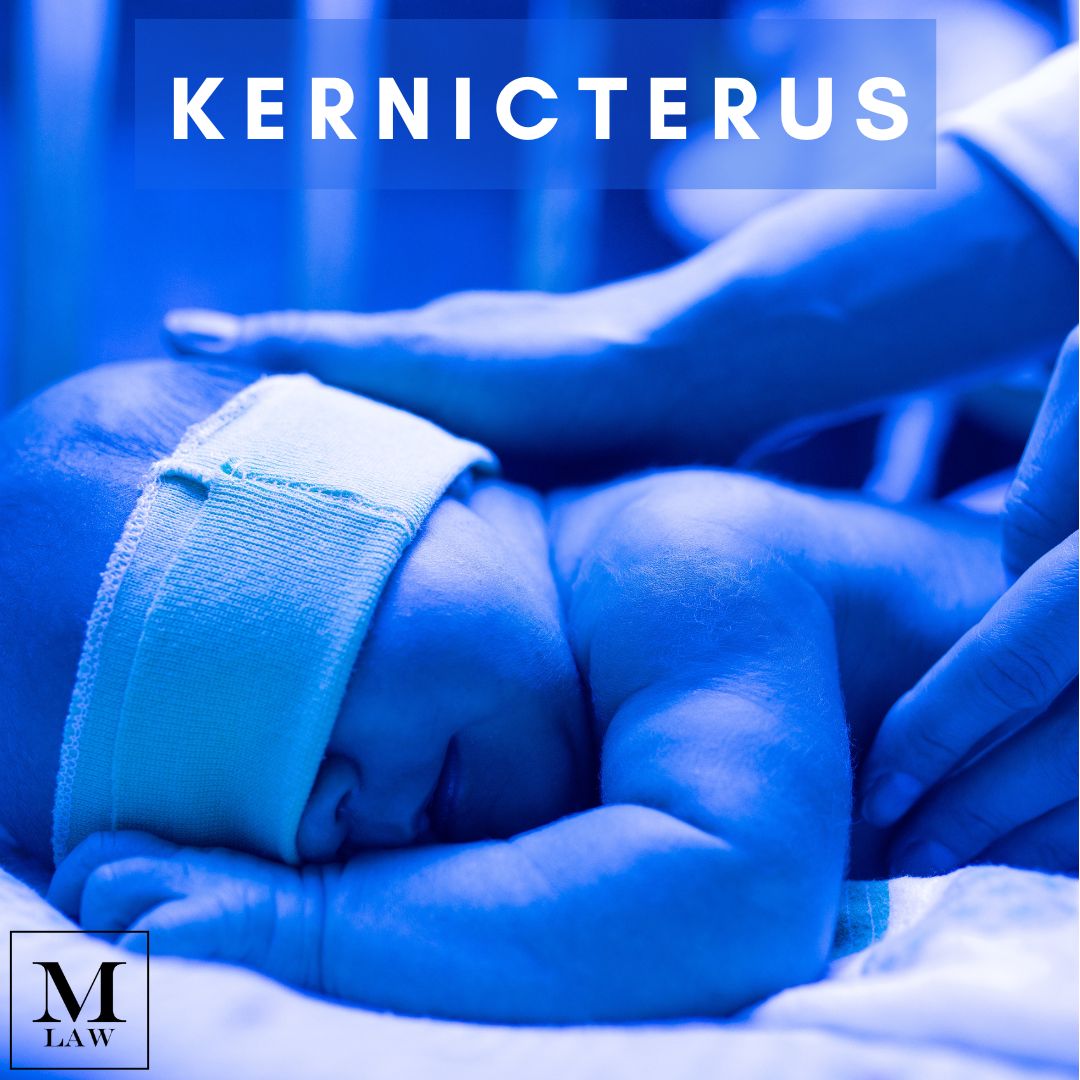Kernicterus is a very rare condition that can occur in newborns with severe jaundice.
Jaundice is commonly known for its distinctive symptom of yellowing skin. This is a result of a buildup of a substance in the blood called bilirubin.
When this bilirubin accumulates to very high levels, it can spread to the brain, causing permanent damage to your child.
Kernicterus is a very serious birth injury, and one which your OB/GYN should be able to identify and treat. If your child suffered brain damage from kernicterus, you may have a case for a birth injury lawsuit. Call the birth injury team at Merson Law PLLC for a free case evaluation today.
What Causes Kernicterus?
Kernicterus is caused by high-level buildup of bilirubin, a yellowish pigment that results from the normal breakdown of red blood cells in the body. When blood cells are broken down and replaced, bilirubin is taken out of the bloodstream by your liver and kidneys and excreted in urine and stool.
During pregnancy however, the mother’s body removes bilirubin for the baby. Once your baby is born, its body must adapt to living outside the womb, particularly, to removing toxins from the body on its own.
Your baby’s body will take a few days to get used to removing bilirubin. Infants commonly develop mild jaundice as their bodies become accustomed to removing the chemical. It is proper practice for your doctor to watch over you and your child to make sure your child’s jaundice resolves promptly.
If jaundice continues and is not treated, bilirubin in the blood can build up to a high level. This is when kernicterus becomes a concern.
If jaundice continues to get worse and is not treated, bilirubin in the blood can build up to a high level. This is when kernicterus becomes a concern. It may be that some babies have health problems that make them more likely to have bilirubin levels that climb to high levels. For example, hemolytic disease, in which a mother’s Rh blood factor is not compatible with her baby’s, can make a baby produce more bilirubin than normal. Intestinal blockages can make it harder for a baby to remove bilirubin.
Kernicterus may be prevented by treating jaundice early before it gets severe.
Signs and Symptoms of Kernicterus
To detect and treat kernicterus, you should first be aware of the symptoms of jaundice, as jaundice can develop into kernicterus if left untreated.
Within the first few weeks after birth, a baby with jaundice may exhibit any of these symptoms:
- Persistent yellowing of the skin
- Yellowing of the whites of the eyes
- Abnormally high levels of bilirubin in the blood, known as hyperbilirubinemia (this can only be detected with lab tests, and not by observation alone)
- Yellowing of mucus membranes
When jaundice is left untreated and develops into kernicterus, your child could exhibit more severe symptoms, including:
- Lethargy, drowsiness, or overall lack of energy
- Poor feeding habits
- Fever
- Shrill, high-pitched cry
- Absence of certain reflexes such as the Moro reflex
- Respiratory distress
- Muscle spasms
- Diminished muscle tone
How long does it take for kernicterus to develop?
While jaundice can develop in an infant within a few days of birth, kernicterus takes longer to become apparent.
After long-term accumulation of bilirubin, the initial signs of kernicterus may begin to manifest. This happens within a few months or up to a few years.
In most cases, children suffer from brain damage and impaired mental function from kernicterus within three to four years.
Can kernicterus be cured?
Jaundice and hyperbilirubinemia can, and often are, cured and treated.
Many parents have heard about the most common form of treatment for jaundice, phototherapy. Doctors may use a special light on your child’s bare body, which increases the rate at which the body can break down bilirubin.
In more extreme cases, babies with a very high bilirubin level may need a blood exchange transfusion. During this procedure, the baby’s blood is removed a little bit at a time. Then it’s replaced with matched blood from a donor.
Another, less invasive treatment for mild jaundice is to increase the number of feedings you give your baby. The goal with this treatment is to increase activity in the digestive system, which encourages more bilirubin to be excreted through stool.
While treating jaundice is commonplace, treatment for kernicterus is much more difficult. It is not possible to cure damage that occurs to the brain as a result of kernicterus, which is why it is crucially important for you and your doctor to monitor your child and ensure conditions like jaundice, if they arise, do not go untreated.
All obstetricians are trained in treating jaundice and preventing kernicterus. If your child needlessly suffered from kernicterus or another birth injury, you may have grounds to sue for medical malpractice or medical negligence.
The team of birth injury lawyers at Merson Law PLLC are experienced in litigating on behalf of parents of children who suffered from birth injures due to negligence, and can evaluate your case for free. Contact us now to get started.








